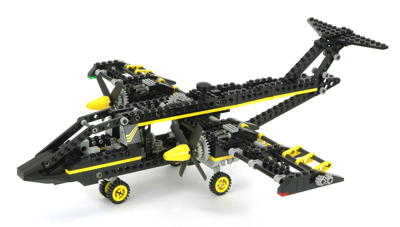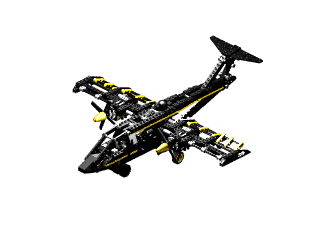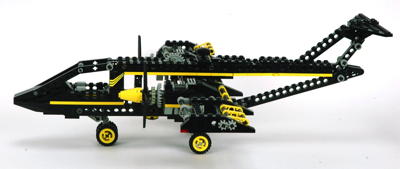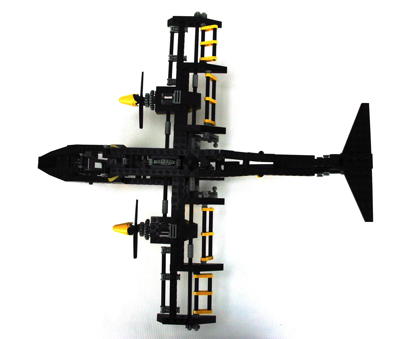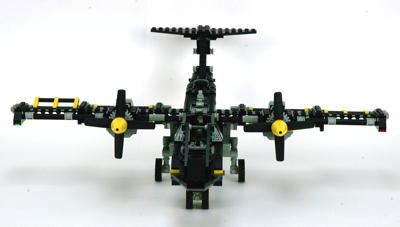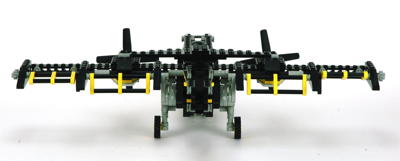Features
|
|
Engine
The turbo-props are driven from above by an input 24 tooth gear, then
geared up 3:1 for a fast speed before passing through a set of bevel
gears. There are a number of other gears on the engine shaft
itself, but they are just there to represent the compressor stage
stylistically and have no mechanical function.
A pair of 2 blade propeller parts arranged at right angles are used here to simulate 4 blade props. It is a pretty
realistic prop which actually has a pitch angle, unlike the previous
parts.
|
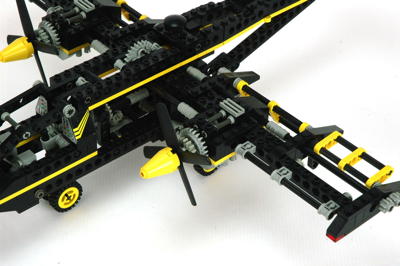
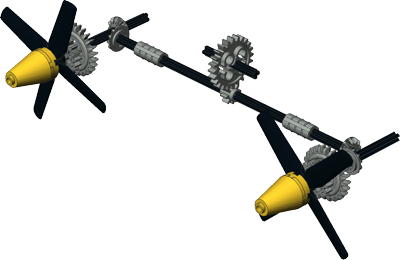
Click for an animation of the
engines
in
motion.
|
|
Ailerons
The primary control surfaces of aircraft which control roll are
ailerons. These panels on the trailing edge of wings move in
opposite directions (one moves up while the other moves down).
Since this model has both flaps and ailerons, only the outboard surfaces
are ailerons.
The ailerons are operated by a knob on the top of the aircraft that
works through a couple of bevel gears to produce opposite
rotation. Nothing fancier than that going on here, though it is
interesting that the aileron is not mounted on the gear axle but on another axle 1 stud further aft.
|
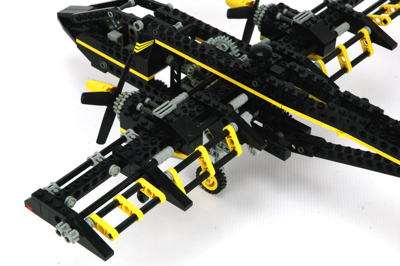
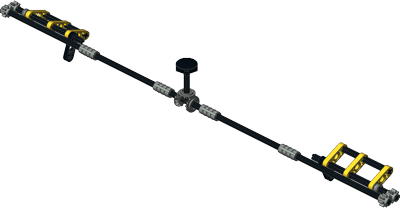
Click for an animation of the
ailerons
in
motion.
|
|
Landing Gear
The model's best feature is the landing gear. This is not just
because it is a spring locked retractable tricycle landing gear, but
mostly because the trailing edge flaps are mechanically slaved to the
gear. When the gear is down, the flaps are deployed. When
the gear is stowed, the flaps are retracted. While this isn't how a
real plane works, you do use the flaps for take-off and landing so it makes perfect sense.
I've color coded the axles which are anchored to structure in red to
make the system easier to understand, and even so it is quite
complicated. A knob on the bottom actuates the system. It
turns a longitudinal axle through a set of 12 tooth bevel gears.
ANother bevel gear set on either end operates the nose and main gears in
synchronization. The 3L black axle you can see on the nose gear
acts as a down stop and carries the weight of the nose of the
model. The rear gear post goes over center and locks when the
engine crankshafts you see above them stop against the fuselage.
These crank elements also serve as the connection to the flaps.
Make sure to watch the animation to appreciate the complex kinematics of
this system. The motion alone is worth the price of this model.
|
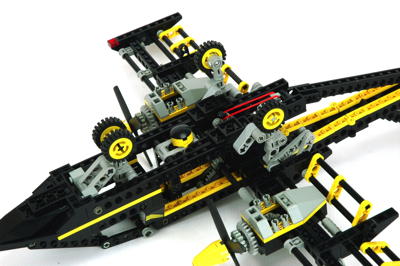
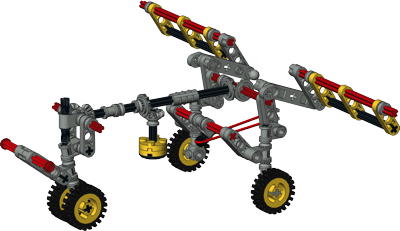
Click for an animation of the landing gear in motion.
|

